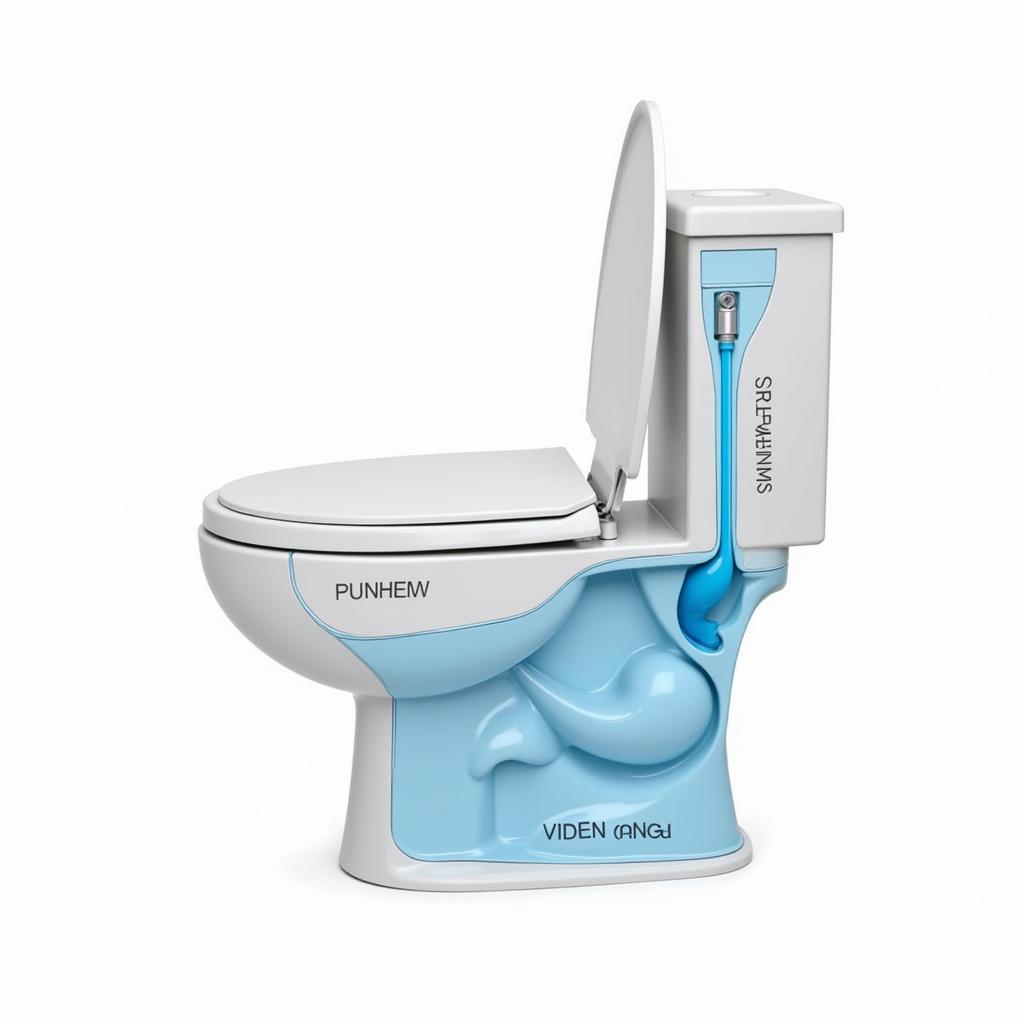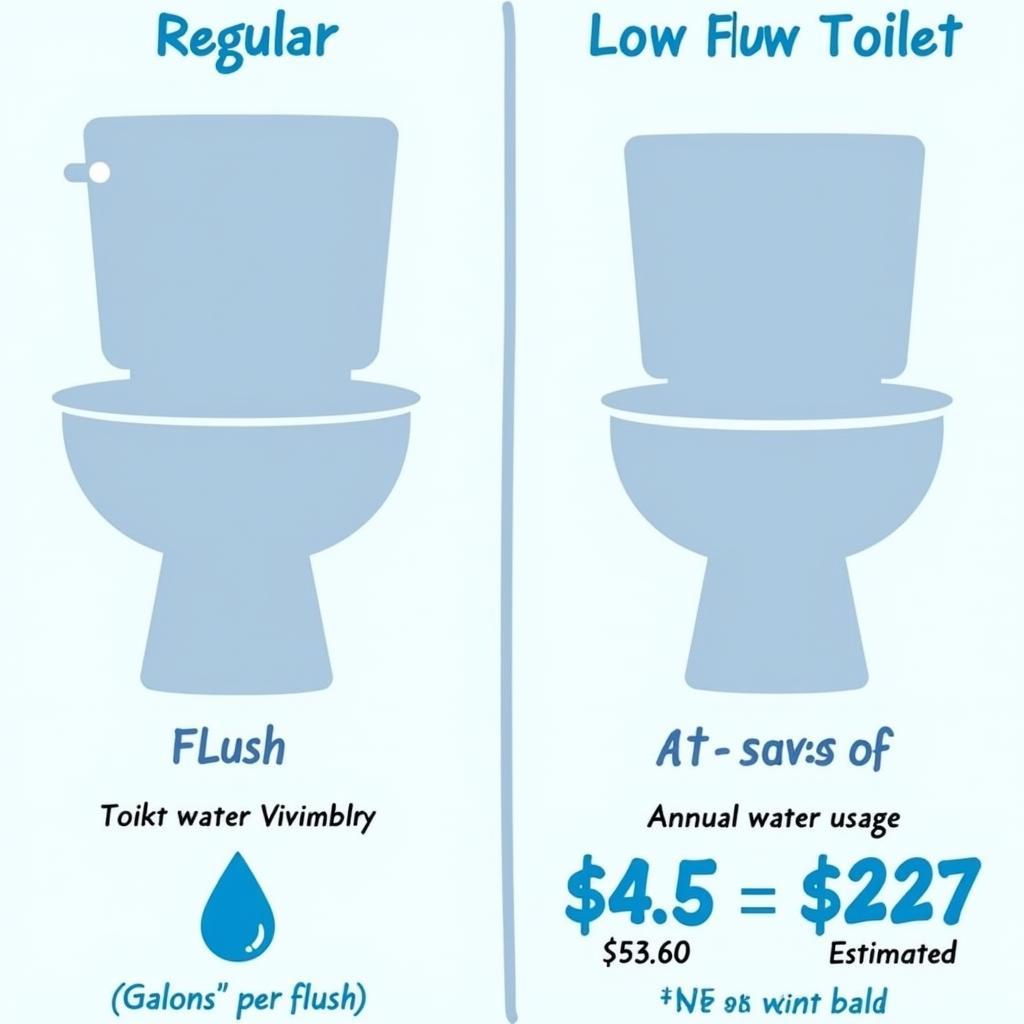Choosing a toilet might not be the most glamorous home improvement decision, but it’s an important one. With rising water bills and increasing awareness of environmental impact, many homeowners are considering switching to low flow toilets. But what exactly are the differences, and are low flow toilets really worth it? This comprehensive guide will delve into the debate of low flow toilets vs. regular toilets, providing you with the information you need to make an informed decision.
Understanding the Basics: How Toilets Work
Before diving into the specifics of low flow vs. regular toilets, it’s helpful to understand the basic mechanics of how a toilet flushes. Traditionally, toilets use gravity to flush waste. When you press the handle, it lifts a flapper valve in the tank, allowing water to rush into the bowl. This forceful flow of water creates a siphoning action that pulls waste down the drain.
Low Flow Toilets: Saving Water, One Flush at a Time
Low flow toilets, as the name suggests, are designed to use significantly less water per flush compared to their older, regular counterparts. In the US, federal standards mandate that new toilets use no more than 1.6 gallons per flush (gpf), earning them the name “1.6 gpf toilets.” In contrast, older toilets can guzzle up to 7 gallons per flush!
 Low Flow Toilet Mechanism Explained
Low Flow Toilet Mechanism Explained
There are two main types of low flow toilets:
- Gravity-fed low flow toilets: These toilets work similarly to traditional models but utilize a smaller tank and more efficient flushing mechanisms to achieve a powerful flush with less water.
- Pressure-assisted low flow toilets: These toilets use compressed air in the tank to create a more forceful flush. While generally more expensive, they are known for their exceptional flushing power and are particularly effective at handling larger volumes of waste.
Advantages of Low Flow Toilets
Switching to a low flow toilet offers several compelling advantages:
- Significant Water Savings: The most obvious benefit is the dramatic reduction in water consumption. This translates into lower water bills, especially for larger households.
- Eco-Friendly Choice: By using less water, you reduce your environmental footprint and contribute to water conservation efforts.
- Rebates and Incentives: Many municipalities offer rebates and incentives for homeowners who upgrade to water-saving appliances, including low flow toilets.
Regular Toilets: The Traditional Option
While less common in newly constructed homes, regular toilets are still found in many older houses. These toilets typically feature larger tanks and rely solely on gravity for flushing.
Disadvantages of Regular Toilets
The main drawbacks of regular toilets are:
- High Water Consumption: Using up to 7 gallons per flush puts a significant strain on your water supply and leads to higher water bills.
- Environmental Impact: Excessive water consumption contributes to water shortages and puts a strain on water treatment facilities.
 Water Consumption Comparison: Regular Toilet vs. Low Flow Toilet
Water Consumption Comparison: Regular Toilet vs. Low Flow Toilet
Addressing Common Concerns About Low Flow Toilets
Despite their benefits, some homeowners hesitate to switch to low flow toilets due to concerns about their performance. Here are some common myths debunked:
- Myth: Low flow toilets require multiple flushes, negating their water-saving benefits.
- Reality: While older low flow models sometimes suffered from weak flushes, modern designs have significantly improved flushing power, often surpassing that of regular toilets.
- Myth: Low flow toilets are noisy and disruptive.
- Reality: Many low flow toilets are engineered to be quieter than traditional models, offering a more peaceful bathroom experience.
Making the Right Choice: Factors to Consider
When deciding between low flow and regular toilets, consider these factors:
- Water Conservation Goals: If reducing your water usage is a priority, low flow is the clear winner.
- Budget: Low flow toilets generally cost more upfront, but the long-term water savings can offset the initial investment.
- Household Size and Usage: For larger households with frequent toilet use, the water savings from a low flow toilet can be substantial.
- Existing Plumbing: Older plumbing systems might require modifications to accommodate some low flow models.
Conclusion: Embracing Water Efficiency for a Sustainable Future
In the battle of low flow toilets vs. regular toilets, low flow emerges as the clear champion for a more sustainable future. With their significant water-saving capabilities, environmental benefits, and improved performance, low flow toilets are an intelligent choice for any modern bathroom. By making the switch, you contribute to a greener planet and enjoy long-term cost savings on your water bills.
FAQ
1. How much water can I save with a low flow toilet?
Replacing a 5-gallon-per-flush toilet with a 1.28-gallon-per-flush toilet can save a family of four more than 14,600 gallons of water per year.
2. Do low flow toilets clog more easily?
Modern low flow toilets are designed to be clog-resistant and often perform better than older, regular toilets.
3. How do I choose the right low flow toilet for my home?
Consider factors like flush performance, bowl shape, height, and style to find a low flow toilet that meets your needs and preferences.
4. Are there any government rebates available for purchasing low flow toilets?
Many municipalities offer rebates and incentives for upgrading to water-efficient appliances, including low flow toilets. Check with your local government for available programs.
5. Can I install a low flow toilet myself?
While possible, it’s generally recommended to hire a licensed plumber to ensure proper installation and avoid potential leaks.
Need More Help Choosing the Perfect Toilet?
Contact us at 0372999888 or email us at [email protected]. Our expert team is available 24/7 to answer your questions and help you make an informed decision. You can also visit our showroom at 236 Cầu Giấy, Hà Nội to explore our wide selection of low flow and regular toilets.